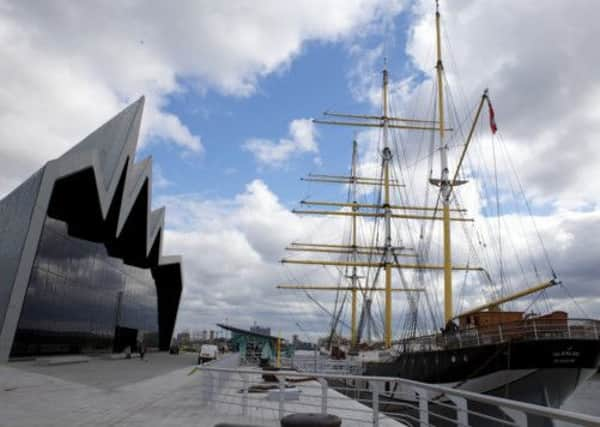Michael Kelly: Why Glasgow doesn’t own the future


Glasgow City Centre is the single largest location of economic activity in Scotland. It generates 34 per cent of Glasgow’s GDP, is home to 28,000 people and hosts 100,000 commuters every working day. Earlier this week city managers presented two consecutive five-year plans to partners in the public and private sectors, to ensure that, among other things, the city maintained its place as the UK’s most important retail location outside London.
The presentation is not short of a certain vision. In 50 years’ time its aspiration is that Glasgow is among the top ten European city centres for international business and visitors. It is not short on the “how” either. It proposes more than 50 action points to achieve the next five-year plan. As proof that these plans are grounded in reality, the council points to the success and progress made since 2000. More than £1 billion has been invested in the city. It has seen the redevelopment of the Merchant City, the emergence of fresh, interesting buildings such as the Hydro and those which now house the BBC and STV, the development of the Science Centre and the expansion of museums and galleries.
Advertisement
Hide AdAdvertisement
Hide AdWithin the context of the UK and compared with where Glasgow was in the 1970s there has been significant progress. The city is cleaner, safer. The visitor industry has grown. Public infrastructure has improved. Private investment has continued. International sporting events are being attracted.
And yet, and yet… Has the city really matched the progress made by its international equivalents? Any visitor to Barcelona must agree that Spain’s second city has outpaced Scotland’s. Is Glasgow as vibrant as Milan, as energetic as Lille? I have just returned from my second visit to Salt Lake City in 30 years. The last time was the month that Ronald Reagan was first inaugurated as US president. The transformation of the city centre over the period overwhelmed me. To counter the attraction of out-of-town retail the private sector was persuaded to build the City Creek Center, a mixed-use development with an upmarket shopping centre, office and residential buildings and extravagant fountains. All of this is under cover, protected from the summer heat by air-conditioning and from winter’s freezing temperature by central heating. Through it all runs a little river with planting on either side. The whole development covers three city blocks. The Center alone cost $1.5bn (£960,000) and is only part of an estimated $5bn sustainable design project to revitalise all of downtown. There is underground parking for 6,000 cars. Now, that’s ambitious.
By contrast, a walk yesterday through Glasgow city centre would suggest that not much has changed visually. The pedestrianisation is functional but not inspiring. The streets are still littered. No returning expat could argue that the place “has changed beyond all recognition”. You still have to dodge showers.
Unlike the States, cities in the UK have never properly addressed the challenge of weather. When I came back from my first experience of covered city centre shopping (Toronto’s Eaton Centre) I proposed roofing over Buchanan Street. It provided an interesting discussion point for a few weeks but nothing came of it. Thirty years on our city centres are still as the Victorians left them, while out-of-town centres enjoy the modern benefits of easy parking and protection from the wind and rain.
It’s an unfair struggle. Yet when such a dramatic solution is put to today’s planners the reaction is even more negative. The reality is that our powerful conservation bodies would never countenance something which made city centre shopping more comfortable. The priority is to protect listed buildings, not help city centres survive. Look at the rage engendered by the proposal to move a few statues from George Square. Maybe Glasgow doesn’t want too much vision. It may be right. Certainly the upcoming BBC4 documentary on Robert Bruce who, in 1945, wanted to knock down Glasgow city centre is a warning that evangelists can often be wrong.
The function of the modern city manager is to produce costed and practical plans for gradual development. Glasgow is doing that, now having an agreed way forward. It may even be that the Salt Lake City model is out-of-date. Forecasts suggest the trend towards online shopping will accelerate. That, together with the continued strengthening of peripheral centres, will reduce retailers’ demand for city-centre space. The uses and purposes of city centres must be re-examined.
If we are ever going to overcome the opposition of conservationists to dramatic change we must change the rules of planning. Apart from speeding up the processing of major developments, the too rigid divisions between the various uses – residential, office, retail – must be broken down to allow more and better integrated mixed developments. Without this, the gap left by retailers will not be filled.
While it is comforting to read of the progress Glasgow has made and reassuring that development and management of the city centre is under active supervision, the sad fact is that most cities in the UK, especially Scottish cities, do not have the wealth to regenerate them as world centres. We have had our day. Like the glory that was Rome’s, Glasgow’s economic supremacy was of another era. We now point to our financial sector, tiny in world terms. We extol our educational establishments, slipping down the world league year after year. We can attract the Commonwealth Games but not the Olympics. We can’t afford another Dali.
Advertisement
Hide AdAdvertisement
Hide AdWhere are the resources to restore Glasgow to the centre of world trade? The cycle has turned from Britain to the US and now onward to Brazil, India and China. Glasgow can only plan its way to surviving in an economic world that has moved away from it. It must continue to be the source of important commercial activity if the Scottish economy is to grow. But, in international terms, its time has passed.